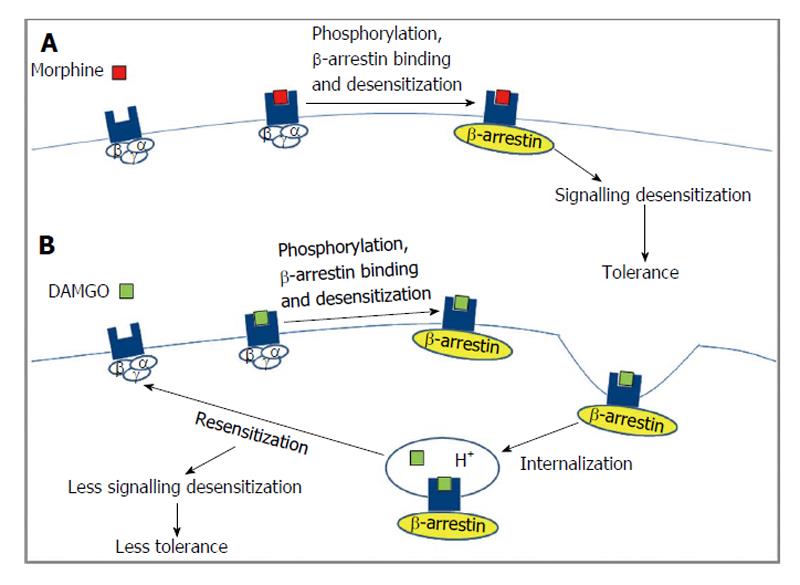Copyright
©The Author(s) 2015.
World J Pharmacol. Mar 9, 2015; 4(1): 144-159
Published online Mar 9, 2015. doi: 10.5497/wjp.v4.i1.144
Published online Mar 9, 2015. doi: 10.5497/wjp.v4.i1.144
Figure 4 Hypothesis about the role of receptor internalization in the development of opioid tolerance.
A: In the presence of “non-internalizing” opioids, exemplified by morphine, receptor signaling is rapidly terminated by receptor phosphorylation and β-arrestin binding. The desensitized receptors remain inactivated in the plasma membrane leading to signaling desensitization and opioid tolerance; B: In contrast, “internalizing” opioids such as DAMGO [D-Ala2, N-MePhe4, Gly-ol]-enkephalin lead to receptor desensitization by phosphorylation and β-arrestin binding but also to rapid receptor internalization and resensitization counteracting signaling desensitization and opioid tolerance.
- Citation: Mudgal A, Pasha S. Role of opioid receptor heterodimerization in pain modulation and tolerance development. World J Pharmacol 2015; 4(1): 144-159
- URL: https://www.wjgnet.com/2220-3192/full/v4/i1/144.htm
- DOI: https://dx.doi.org/10.5497/wjp.v4.i1.144









